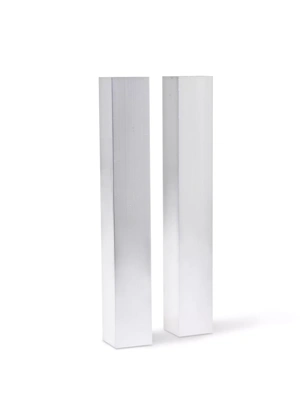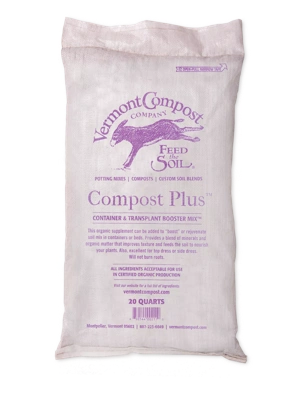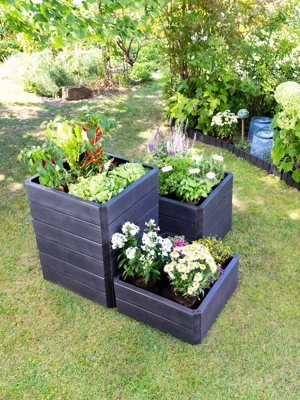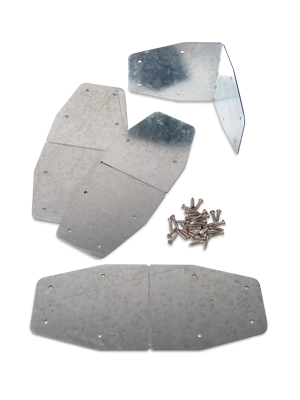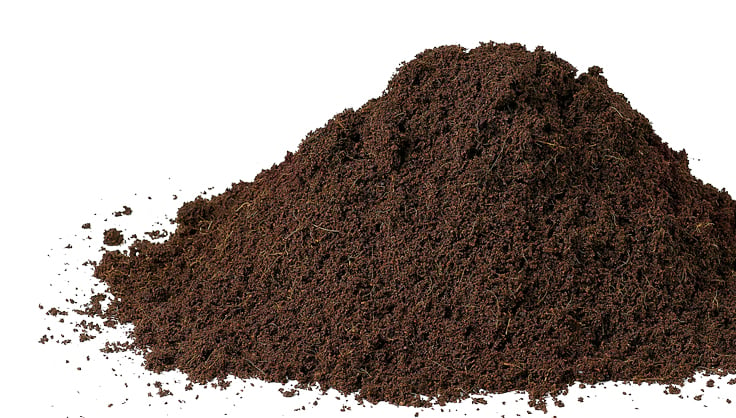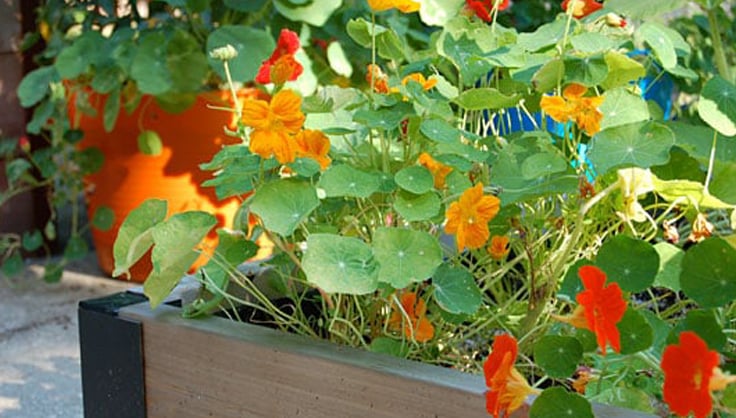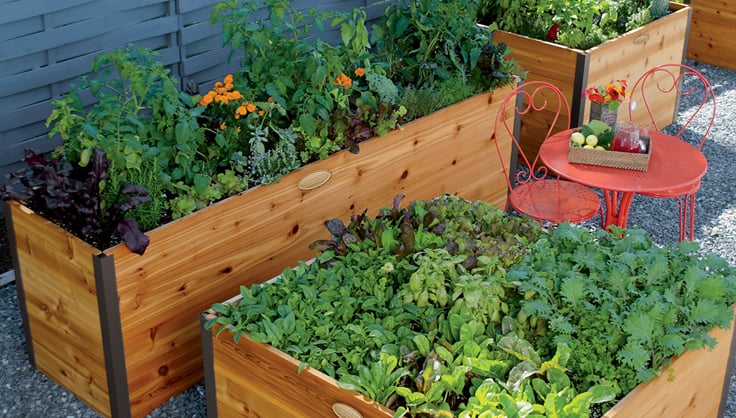Growing Tomatoes from Seed to Harvest
Nothing tastes fresher than a garden tomato you grew from seed!
If you've never bitten into a fragrant, vine-ripened, sun-warmed tomato harvested fresh from your own garden, you haven't tasted a real tomato. And once you do, you'll never again be satisfied with the mealy supermarket imposters. Fortunately, tomato plants are easy to grow and remarkably productive!
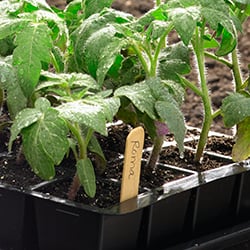 Healthy tomato seedlings in a self-watering seed starting tray.
Healthy tomato seedlings in a self-watering seed starting tray.What You Need to Grow Tomatoes From Seed
Quick to germinate and grow, tomato seeds are best sown indoors about six weeks before your average last frost date. (To determine your last frost date, ask a gardening neighbor or contact your Master Gardener program.). Tomatoes are long-season, heat-loving plants that won't tolerate frost, so it's best to set them into the garden as transplants (young plants) after the weather has warmed up in spring.
1. Seeds
There are hundreds of tomato varieties available as seed, and choosing a few for your home garden can be a daunting task. Here are a few things to consider:
- Decide on the type of tomatoes you want; for example, cherry tomatoes, slicers or tomatoes for making sauce or paste.
- Consider the size of the mature plants. Determinate tomatoes grow to about 3 feet tall and are the best choice for containers. Indeterminate tomatoes get very large, up to 6 feet tall. All tomatoes benefit from supports, such as Tomato Cages or Tomato Ladders.
- Look for disease-resistance. Tomatoes are susceptible to a number of diseases that may or may not be a problem in your region. To be on the safe side, I always grow at least one variety with resistance to verticillium and fusarium (designated by a V or F after the variety name).
2. Soil
Even though it's known as "potting soil", the best medium for seed starting has no soil at all. Use a sterile, soilless mix that's labeled for seed starting. Never use garden soil, which often drains poorly and may harbor disease organisms.
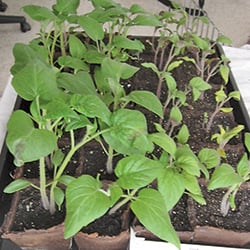 The seedlings on the left were grown in our Organic Seed Starting Mix. The seeds on the right were grown in ordinary potting soil.
The seedlings on the left were grown in our Organic Seed Starting Mix. The seeds on the right were grown in ordinary potting soil.3. Containers
Tomato seeds can be started in just about any container, provided it has drainage holes at the bottom. How many seeds are you looking to start? You may just want to grow a few plants in extra large containers, or perhaps you're looking to start an infinite number of seeds with a Soil Blocker — the choice is yours! Shop all pots and seed-starting trays here.
4. Light
Warm temperatures (70-75 degrees F) help speed up seed germination; place your seed starting containers on a heat mat and cover with a humidity dome to get seeds started. Once seeds have germinated, shut off the heat mat and remove the humidity dome. seedlings grow best in cool room temperature, about 65 degrees F.
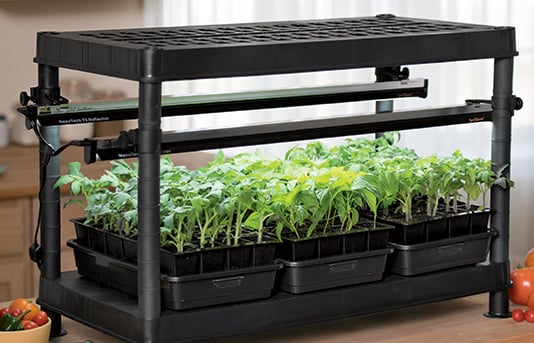 This Stack-n-Grow light stand has adjustable LED bulbs to ensure strong, sturdy seedlings.
This Stack-n-Grow light stand has adjustable LED bulbs to ensure strong, sturdy seedlings.Although you can start your tomatoes on a sunny windowsill, you'll get better results growing them under some type of LED grow light. Winter and early spring sunlight isn't nearly as intense as summer sunlight, and there are fewer hours of daylight. Insufficient light can lead to weak, spindly plants. A light garden with adjustable lights is ideal for seed starting.
How to Plant Tomato Seeds
- Thoroughly moisten the seed-starting mix, and then fill the containers to within 1/2" of the top. Firm the mix but don't compact it.
- Place two or three seeds into each small container or each cell of a seed starter. Cover the seed with about 1/4" of soil and gently firm it over the seeds.
- Water to ensure good seed-to-mix contact. You can use a plant mister or just dribble a stream of water over the top. You don't need to soak the soil, just moisten the top layer.
- Place the pots in a warm spot or on top of a heat mat. At this point, the seeds don't need light.
- Keep the mix moist but not soaking wet. If your seed-starting system has a greenhouse top, use it to help hold moisture. Or, you can lay some plastic kitchen wrap over the tops of the pots.
- Check pots daily. As soon as you see sprouts, remove the covering and place the pots in a sunny window or under grow lights, keeping the lights just an inch or two above the tops of the plants.
How to Care for Tomato Seedlings
Continue to keep the soil moist but not saturated. Dry seed-starting mix is lighter in color than moist mix — a good indication that it needs water. Some gardeners run a fan in the room with their growing seedlings; good air circulation reduces the chances of disease problems, such as damping off.
If you're growing plants on a windowsill, rotate pots daily so plants grow upright instead of leaning toward the light. If you're growing under lights, raise the lights as the plants grow, keeping them just a few inches above the plants.
Thinning
For the strongest, healthiest plants you'll want just one seedling per pot or cell. Thinning (removing extra seedlings) is a tough task for many gardeners who hesitate to dispatch the seedlings they've been nurturing. But it has to be done. Select the strongest, healthiest seedling and use a pair of scissors to snip off the others at the soil line. You can try to transplant the extras into different pots, but you risk disturbing the roots of the remaining plant and, realistically, how many tomato plants can your garden accommodate?
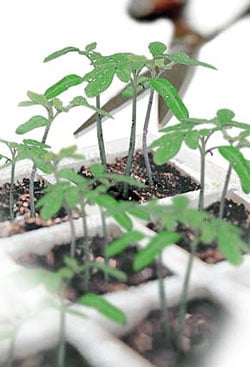 Use scissors to thin out crowded seedlings.
Use scissors to thin out crowded seedlings.Fertilizing
Once the second set of true leaves appears, it's time to begin fertilizing. The first two leaves are called "seed leaves;" subsequent leaves are called "true leaves." Once or twice a week, apply a water-soluble fertilizer that's been mixed at half the recommended rate.
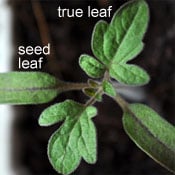 The difference between a seed leaf and a true leaf.
The difference between a seed leaf and a true leaf.Transplanting
Your tomatoes may need to be transplanted to larger containers if they outgrow their pots before it's time to set them outdoors. Don't allow the plant to get pot-bound, with the roots filling the container, or growth may be stunted. For step-by-step instructions, read How to Repot a Tomato Seedling.
Wait to transplant your tomato seedlings into the garden until after the average last spring frost date. Be prepared to protect the seedlings with season-extending garden fabric, row covers or plant covers) if a late frost threatens. If all goes well, you'll be harvesting ripe tomatoes in eight weeks or less!
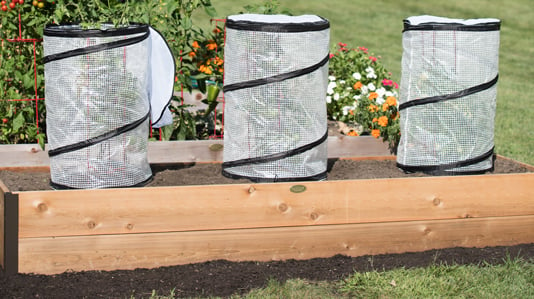 Special covers protect young plants from springtime frosts and help .
Special covers protect young plants from springtime frosts and help .Last updated: 03/19/2024
Print this Article:
Related items
Related Articles
Get the Dirt
Stay up to date on new articles and advice. Please fill out the information below.



